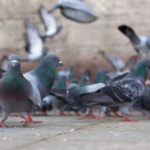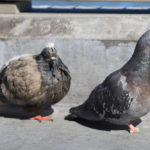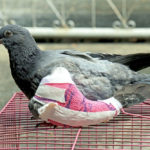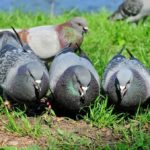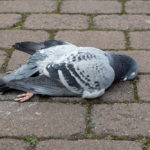Doves and pigeons are two birds that are perceived very differently.
Culturally, we associate doves with romance, celebrations, peace and unity. By contrast, poor pigeons are mainly thought of as pests!
We tut when we see flocks of them gathered in parks and plazas, and we view them as mangy, diseased and annoying.
But on closer inspection it becomes apparent that doves and pigeons have a lot more in common than we like to admit.
Their shape, size, calls and behaviors are all matching, which has led many to ask: are doves really just white pigeons? The answer is… yes!
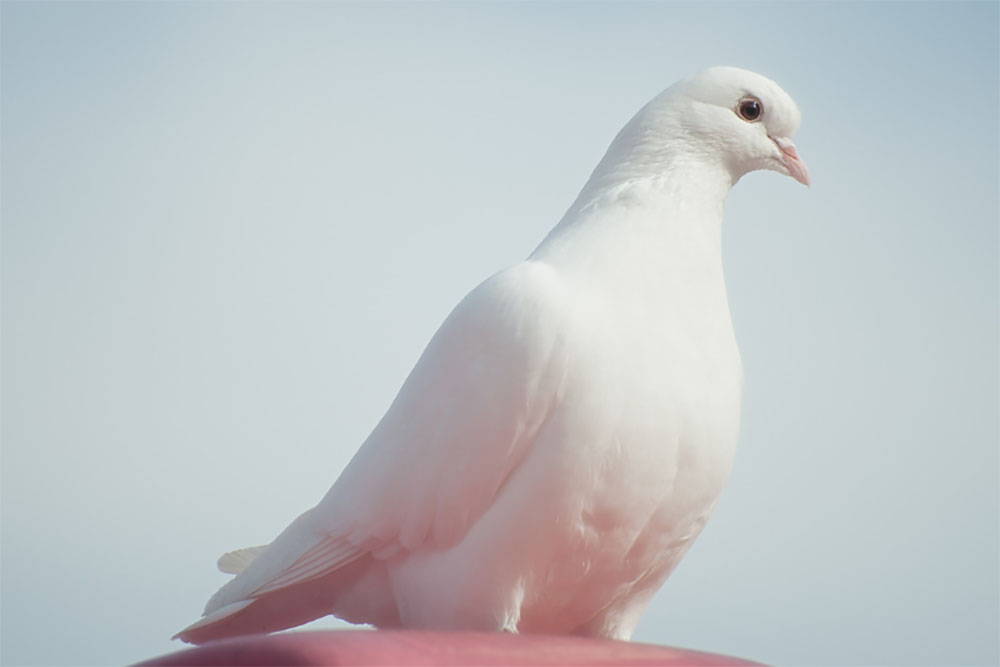
Doves are white pigeons and pigeons are colored doves! They are the same species of bird!
Just as we humans come in all shapes, sizes, colors and forms, so too do pigeons, and yet, just like us, they are all one of the same species.
There are in fact many, many different types of pigeon on the planet and they each have distinctive characteristics of their own.
However, the wild Rock pigeon is generally thought of as the first species to be domesticated, and it was from them that most others have descended.
Let’s take a closer look at the similarities and differences amongst these fascinating creatures, and try to put a few myths to bed.
The Columbidae Family Tree
Doves and pigeons are both part of the Columbidae family of birds, which is the only family in the order of Columbiformes.
These scientific names and classifications can seem confusing, but it essentially means that they share the same gene pool and are descended from the same original species.
Next time you see a dove and a pigeon sitting in the same tree, you will know that they in fact come from the same family tree!
The shared DNA means that all doves and pigeons have similar physical, vocal and behavioural characteristics and we will come to them in a moment.
This enormous extended bird family has 344 different species split into 50 genera (which is science speak for subgroups).
Sadly, 13 of these species are extinct and can no longer be found anywhere in the world.
Columbidae Family Traits
The most obvious difference between doves and pigeons is the color of their feathers.
Doves are famous for their white, soft plumage, whereas most domestic and feral pigeons are blue, grey, brown or a combination of these tones.
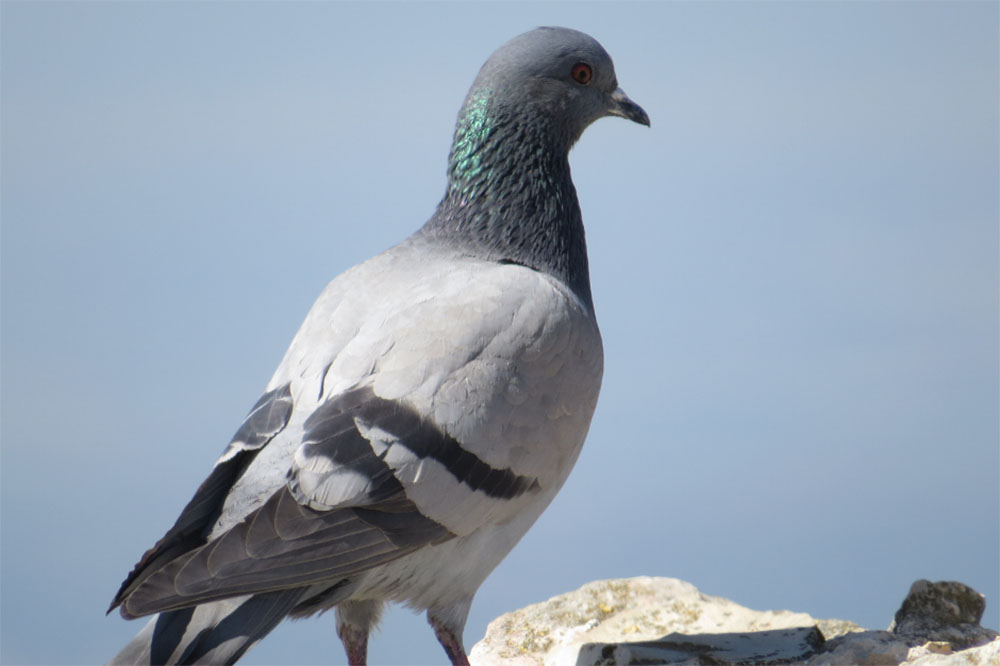
But there are far more similarities between doves and pigeons. Here are a few shared characteristics of the Columbidae family…
Physical characteristics:
- Stout bodies (rounded belly)
- Short necks
- Short, slender beaks (with fleshy areas at the base)
- Short, scaly legs and feet
- Soft feathers, densely layered
- Tapered wigs
- Cooing or crooning calls
Behavioral characteristics:
- Feeding on seeds or fruit
- Building flimsy nests
- Both parents care for young
- Egg clutches contain 1-2 eggs
- Both parents produce crop milk to feed young
Of course, there is variety amongst the different species in terms of size, coloration, habitat, vocal calls and much more, but when you think about how different a labrador is to a chihuahua and yet they are both part of the canine family, these differences make more sense.
What Is In A Name?
Etymology is the study of words, and when it comes to the ‘etymological’ differences between doves and pigeons there are a lot of discrepancies.
Afterall, why are doves called doves and pigeons called pigeons if they are the same thing?
The word ‘dove’ is a Germanic word, and it refers to the birds’ diving flight pattern.
The word ‘pigeon’ is French and comes from the Latin word ‘pipio’ which translates as ‘peeping chick’ and probably refers to the pigeon’s distinctive head bobbing action.
In English, all pigeons and doves were originally called pigeons, however the introduction of the term ‘dove’ was used to describe smaller species of pigeon.

Over the years the size classification ceased to hold water (as some doves are bigger than some pigeons), and yet the name remained.
Nowadays, the words ‘dove’ and ‘pigeon’ are often interchangeable, for instance, some avine websites will make reference to the wild rock pigeon, whilst others will call it the wild rock dove.
As a general rule however, those with white feathers are called doves, and the bluish-grey birds are known as pigeons. But there are always exceptions to the rule, the turtle dove being the most obvious.
Habitat
Since we tend to think of doves being perched prettily in trees and of pigeons as bustling about busily on pavements, many people wonder: do doves live in trees and pigeons on the ground?
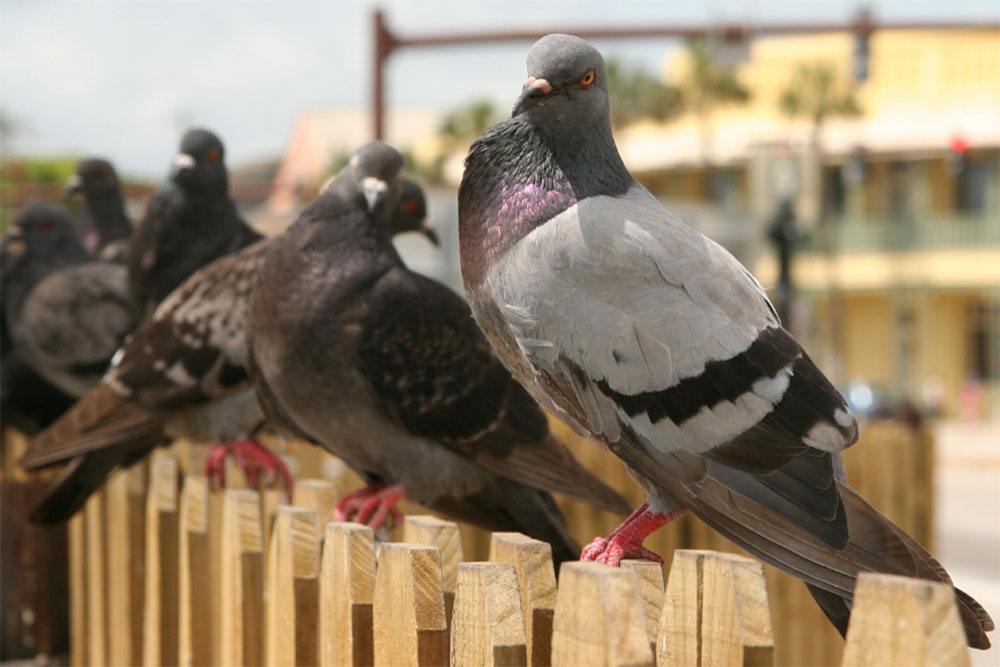
However, there is no distinction between the habitats of doves and pigeons. All Columbidae species fall into one of three categories:
- Terrestrial (ground dwelling)
- Semi-terrestrial (ground and tree dwelling)
- Arboreal (tree dwelling)
Different species fall into different categories, and this is usually due to the specific environment around them.
If there are lots of ground predators then the pigeon species will most likely have taken to the trees over years of adaptation and evolution.
If there are lots of food sources at ground level (like bins and rubbish in towns and cities) then the pigeons will have evolved to make the most of this.
Geographical Range
The Columbidae family are a pretty adaptable bunch, and they have managed to spread their wings all around the world.
Their geographic range is now so extensive that it is actually easier to mention where these birds don’t dwell than where they do.
The only areas where doves and pigeons haven’t settled are the high Arctic, Antarctic and the Sahara Desert. Other than that, it has been world domination for the Columbidae family.
These highly adaptable birds have made homes in all manner of environments, from tropical forests, to woodlands, to sandy islands and, of course, urban settings.
They can be found in Europe, Asia, Africa, Australisia and the Americas, and have even made their way to remote islands in the Indian Ocean as well as the Azores in the mid-Atlantic.
There is no distinction between the geographical range of doves and pigeons per say, but there are wide variations of geographical range between certain species within the family.
The rock pigeon or rock dove is by far the most common species and is therefore often referred to as the common pigeon.
It was originally found wild in Europe, North Africa and West Asia but can now be found all over the world, mainly in highly built-up towns and cities.
There are an estimated 120 million rock pigeons on the planet!
Now compare that to the pink pigeon, which is one of the most rare species.
It is so rare that it can only be found on the island of Mauritius in the Indian Ocean and it nearly went extinct in the 1990s. There are now thought to be around 500 pink pigeons worldwide.
Population
As shown in the discrepancy of numbers between the wild rock dove and the pink pigeon, not all pigeons are in as plentiful a supply as those we see crowding around picnic benches in the park.
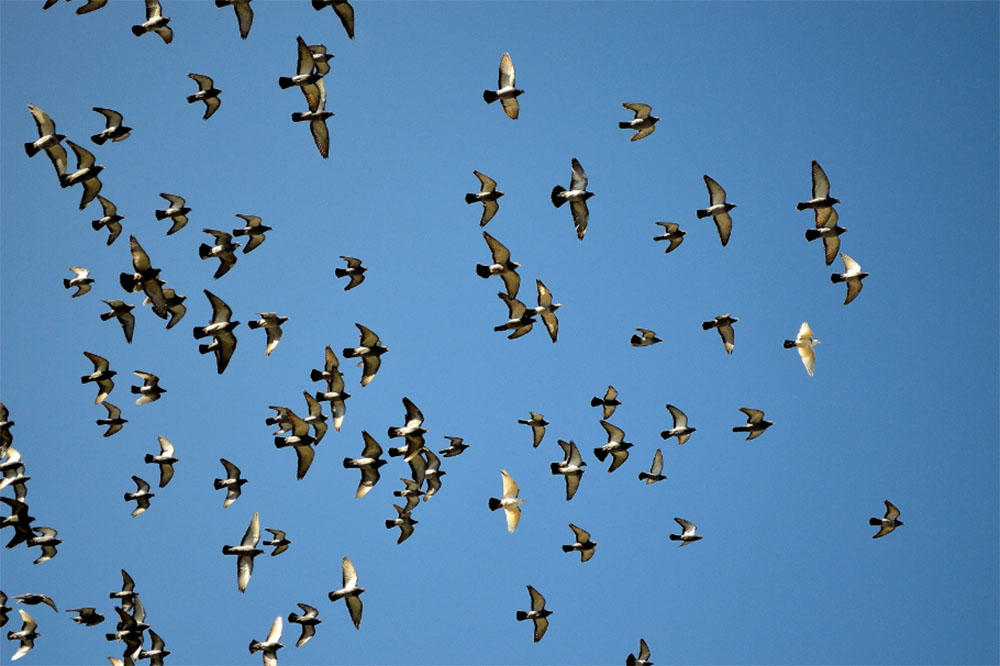
13 species are already extinct and many others are on the cusp.
Here are some more examples of pigeon and dove species with varying geographical ranges and population numbers:
- Grenada Dove – only found on the Island of Grenada (160 individuals)
- The Somali Pigeon – only lives in small area of Northern Somalia (727 individuals)
- Moreno’s Ground Dove – only found in tiny part of Northern Argentina (below 10,000)
- Black-banded Fruit Dove – found only in Arnhem Land, Australia (below 10,000)
- Whistling Dove – Kadavu Island, Fiji (10,000 individuals)
- Eared Dove – Found across South America (32 million)
- Eurasian Collared Dove – Found in CHina, India, Middle East, Europe and the British Isles (50 million)
Feeding
Because we are so used to seeing pigeons pecking at leftovers on the sidewalk it can be confusing to understand what their dietary habits are (or should be).
Many people wrongly believe that pigeons and doves have separate diets, simply because it is hard to imagine a dove eating fried chicken and tacos on the roadside.
However, there is no distinction between the diets of doves and pigeons.
In fact, all Columbidae species fall into two categories:
- Granivores (seed eating birds who generally dwell on the ground)
- Frugivores (fruit and mast eating birds who tend to dwell in trees)
However, urban birds (in particular wild rock pigeons) will eat almost anything that they can find if they are hungry enough.
Proteins, carbohydrates and even meats make the menu for these birds, but it is not necessarily healthy for them.
Indeed, many urban pigeons fall very ill after eating certain junk foods that humans throw at them.
So, the next time you think that you are being kind by giving a pigeon your leftover burger, remember that you might actually be giving them a very sore tummy instead.
The variation in diet between the different species of doves and pigeons results in some distinctive physical differences too:
- Granivores have thicker gizzard walls and their intestines are longer
- Frugivores have the ability to cling to branches and hang upside down to reach fruit
- Granivores have duller plumage
- Frugivores have more brightly colored plumage
There are a few, rare species of these birds who have their own unique feeding habits. For example, ground doves and quail doves will also eat worms and small insects. And the Atoll fruit dove will even eat small lizards and reptiles! Other species enjoy snails, moths and fruit flies.
Predators
Both doves and pigeons fall prey to larger predators and birds of prey. There is no difference between the types of predators that doves and pigeons encounter, the difference is caused by the environment and geographical location that each bird is in.
Tree dwelling birds are particularly vulnerable to larger birds of prey who have a greater diving velocity than their own.
Ground dwellers are more exposed to snakes and lizards, and are more likely to have their eggs eaten by these predators too.
And one of the pigeons’ biggest predators are human beings.
Not only do we shoot and hunt these birds for sport and for their meat, but we also cull them when their numbers grow too high.
In Summary
So having looked at all the characteristics and behaviours of doves and pigeons, it is clear to see that they have far more in common than they have that differentiates them.
They are in fact the exact same species of bird, just with different colored feathers. So next time you shoo a pigeon away from your table, remember that it is a beautiful dove in disguise!

